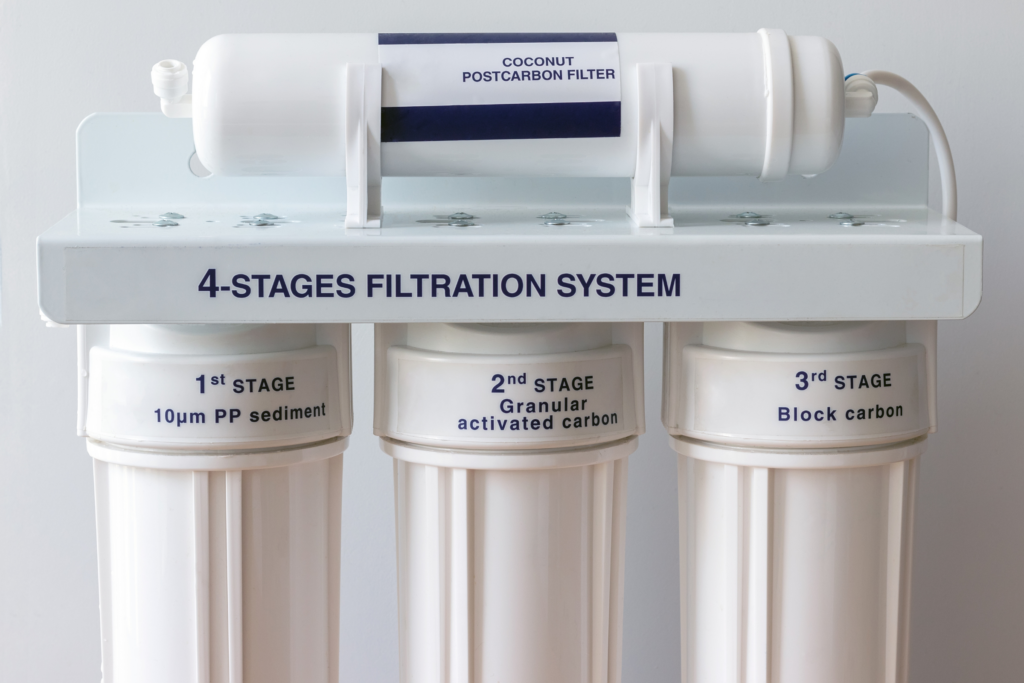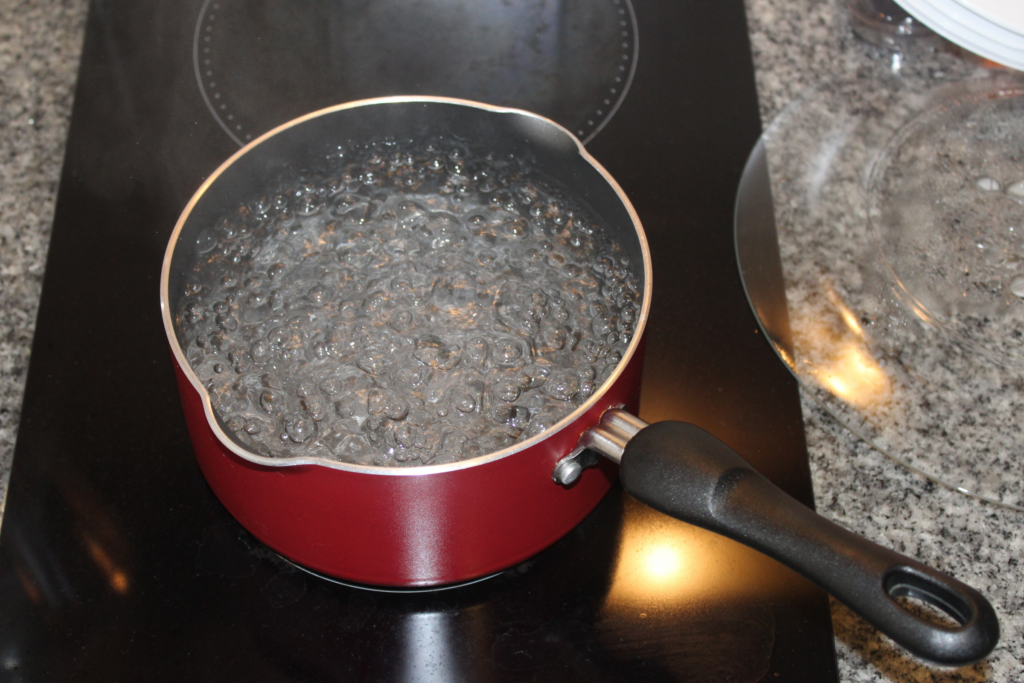What Water Filtration Method Removes Viruses? (The best filters to use)
Infectious viruses can readily spread through water and cause illnesses. Some ailments caused by viruses include cholera, typhoid, flu, hepatitis, conjunctivitis, gastroenteritis, and meningitis. Using a water filter to eliminate viruses is paramount to prevent contracting such ailments.
Rever osmosis is the most efficient and practical water filtration method to remove viruses. Viruses can also be removed from water using chlorine tablets, ozone, ultraviolet light, distillation, ultrafiltration, or boiling. Installing a simple 3-stage reverse osmosis filter in your home can dramatically improve your water quality.
Read on to learn more about what water filtration method removes viruses in your home water supply! Below are some of the best water filters for removing viruses.
Do water filters Remove or Get Rid of viruses?
Filters do not kill viruses or any other biological contaminants found in water. Instead, they are designed to work like sieves that allow smaller particles like water molecules to pass through while blocking particles larger than their pore size.
However, many typical filters have pores 0.2 microns in diameter, which is large enough for some viruses to pass through. Therefore, simply filtering water is not a sure way of making it safe for drinking.
Which Filters Cannot Remove Viruses?
All microfiltration filters, such as ceramic, sediment, charcoal, activated carbon, fabric, and paper filters with pore sizes ranging from 0.05 to 5 microns, cannot remove viruses. Even ultrafiltration filters, such as membrane filters with pore sizes between 0.001 and 0.05 microns, cannot reliably remove all viruses.
In addition, many viruses are too small and light to be removed by simply settling using gravitational sedimentation filters unless attached to bigger and heavier particles. Removal of viruses by sedimentation hardly ever exceeds 90%.
| Can’t remove/kill viruses | Can remove/kill viruses |
|---|---|
| Ion exchange | Reverse osmosis |
| Ceramic | Ultraviolet light |
| Activated carbon | Distillation |
| Sediment mesh |
Granular media and rapid-rate depth filters like sand, gravel, diatomaceous earth, coal, and other minerals have low effectiveness. Vegetable and animal-derived depth filters such as coal, sponge, charcoal, and cotton, among others, have moderate effectiveness.
Chemical filters, like the ion exchange technology that binds contaminants to the surface of the filter, do not trap viruses. Iodine resins used in point-of-use systems can deactivate viruses effectively.
However, it is difficult to dissolve iodine in water, which can also lead to undesirable health effects. None of the other chemical agents suggested and occasionally used to disable pathogens are considered safe for prolonged use for disinfecting drinking water.
For example, copper and silver are also difficult to dissolve in water and are mainly bacteriostatic. The silver concentrations used in point-of-use treatment systems cannot kill viruses.
On the other hand, quaternary ammonium compounds (QACs) are rare, expensive, and ineffective against viruses. For these reasons, these chemical filter agents are not approved for routine household water disinfection.

Why Can’t Some Filters Remove Viruses?
Fabric, paper, membrane, canvas filters, and their likes, such as cloth, other woven fabric, synthetic polymers, and wick siphons, have high to low effectiveness depending on pore size and composition.
Nonetheless, many such filters have low efficacies since their pores are much larger than the diameters of viruses. However, some membrane and fiber filters have pore sizes between 0.01 and 0.001 micrometers (ultrafilters), which are tiny enough to remove some viruses efficiently.
Ordinary fabric, paper, monofilament nylon, or filters of a similar nature have no endorsement to be used for the general treatment of household water. The pore sizes of these filters are too large to retain free viruses, which are not associated with large particles or organisms.
Ceramic and other porous cast filters made of clay or other minerals also vary in effectiveness depending on pore size and ceramic filter quality. Many of these filters consist of media that can adsorb viruses and should be able to attain high virus retention rates.
But, due to competition for adsorption sites with other contaminants, the efficiency of adsorbing viruses often decreases with increased use. It is necessary to restore the adsorption sites through physical or chemical cleaning.
Commercial ceramic filters, especially those manufactured in the UK and US, are highly tested for microbial removal efficiencies, and most have certified performance ratings.
Some of these filters are rated to remove viruses by at least 99.99%, as required by the United States Environmental Protection Agency (USEPA) for point-of-use microbial water filtration. Body feed and septum filters like diatomaceous earth and other fine earth media also exhibit moderate removal effectiveness.
Do Viruses Pass Through Bacteriological Filters?
Viruses are hundreds of times smaller than bacteria, with most varying between 0.004 and 0.1 microns. They are also extraordinarily tough organisms that can live through extreme cold and hot temperatures. You can effectively remove bacteria from water with a filter size of 0.3 microns or less.
However, this filter size range is ineffective in removing viruses as they easily pass through.
The best method for removing viruses from water is reverse osmosis (RO), a membrane filtration process that can remove particles ranging in size from 0.001 to 0.0001 microns. RO generally uses ultrafiltration membranes with pores ranging in size between 0.01 and 0.1 microns and nano-filters with pores ranging from 0.001 to 0.01 microns.
Signs you need to worry about viruses in your water
Thankfully, in most areas of the US, you won’t have to worry about viruses in your water. Municipalities are required to maintain standards of water quality. However, if you draw water from a well or other private source, you should keep water safety in mind.
The most obvious way to tell you might have harmful viruses in your water is related impurities. If your water is cloudy or visibly contaminated, be cautious. Additionally, if you are repeatedly getting sick, it may be a sign of contaminated water.
Unfortunately, as viruses are microscopic, there is no easy way to tell if you need to be concerned. The best way to know if your water has viruses is to send a sample to a local lab.
Do Charcoal Filters Remove Viruses?
Charcoal filters have been in use both for point-of-use and municipal water treatment. However, their viral filtration capacity is quite negligible. To improve them, they are usually coated or mixed with oxides or hydroxides of metals such as calcium, iron, aluminum, and magnesium to make them positively charged. In this way, they can hold onto the negatively charged viruses electrostatically.
Pure charcoal filters can only remove between 50% to 90% of viruses and only when the viruses are coagulated together or bound to other larger particles. On the other hand, positively charged adsorptive filters can remove 90 to 99% of viruses. The downside to modified charcoal filters is that the technical expertise needed can be too involved and expensive for household use.
Because of that, they are often mainly used for community or municipal water treatment operations.

Does RO Remove Viruses?
Reverse Osmosis Systems are highly effective at eliminating viruses and work by pumping water through semi-porous membranes from the highly contaminated source to a region of low contamination. They usually contain more than one filter for pre- and post-filtration, with pore sizes as tiny as 0.0001 microns.
Viruses are the hardest to filter out among all microbial pathogens due to their small sizes (typically between 0.02 and 0.4 microns). Since the pore sizes of RO membranes are much smaller than these typical viral sizes, they can entirely remove viruses by size exclusion alone.
The membranes need careful and regular monitoring because any slight faults in their structure can result in the passage of contaminated water into the product side. That said, RO filters remove bacteria and viruses with high efficiency.
Does Boiling Water Remove Viruses?
Sometimes the answer to “What water filtration method removes viruses” isn’t a filtration method at all. According to the Centers for Disease Control (CDC), bringing water to a rolling boil for at least one minute is highly effective in killing viruses.
So, if you do not have a water filter, you can achieve the same results by boiling your water for a few minutes. Research has shown that many viruses get killed almost 100% when subjected to temperatures above 64°C for more than 3 minutes.

Summary of what water filtration method removes viruses
Viruses are one of the most dangerous microbial contaminants found in water. They are highly infectious, more than bacteria, and limited contact with them is enough to cause illnesses and life-threatening health conditions. Water used for drinking, cooking, or washing fruits and utensils must be free of these pathogens.
The surest way of doing this is to use water filters that have been tried, tested, and certified to rid water of viruses according to the highest available standards. That’s why you need a reverse osmosis filter that deploys a combination of water treatment technologies to give you the safest drinking water you can trust. When it comes to viruses, not just any filter will do.
Let Us Know How We’re Doing!
Did this expertly prepared resource answer your question?
Do you have another question about home maintenance, home improvement projects, home appliance repair, or something else?
Get more information, send in questions and keep the discussion going by contacting the I’ll Just Fix It Myself company customer service team at at 1-800-928-1490 or Email us at [email protected]
